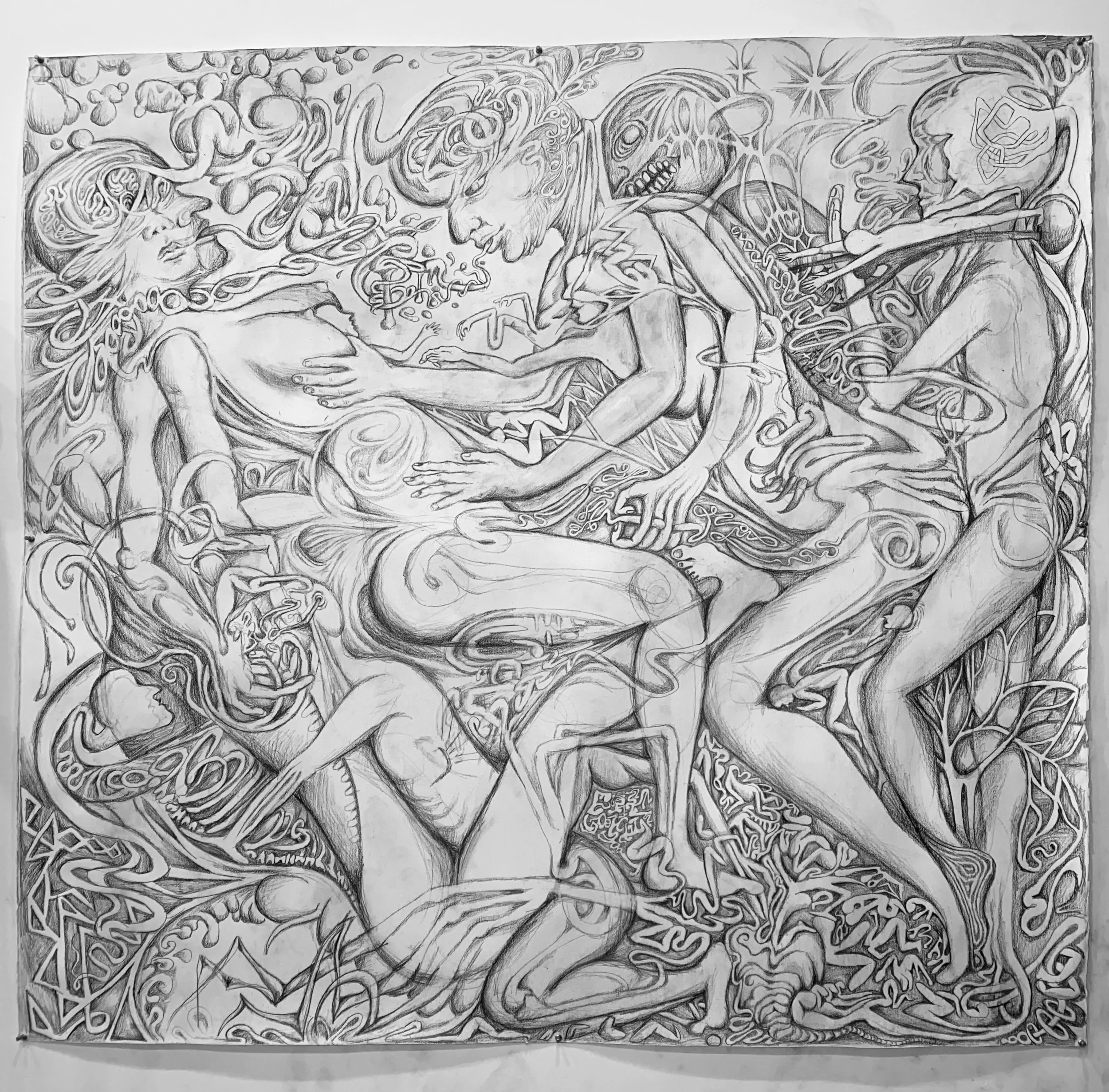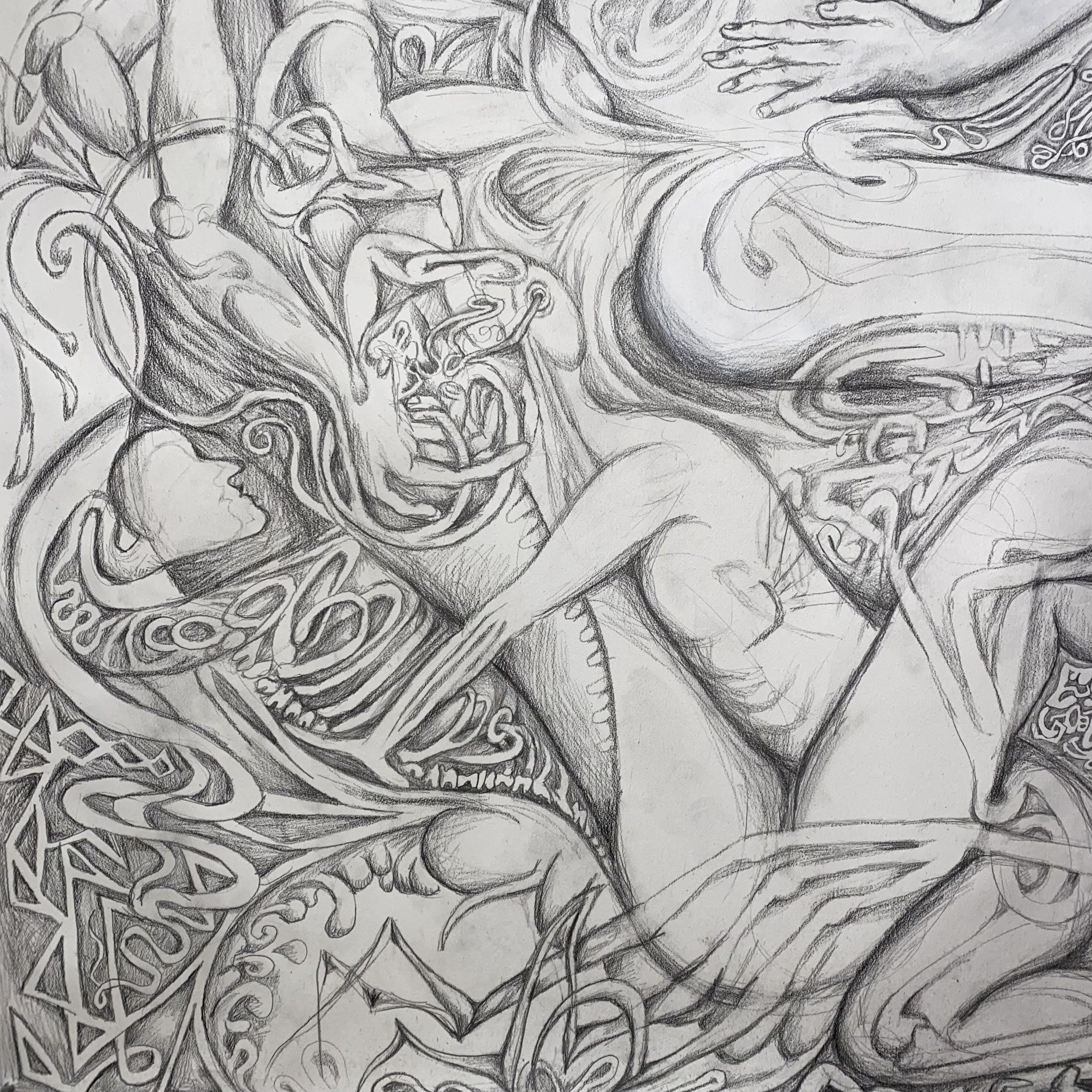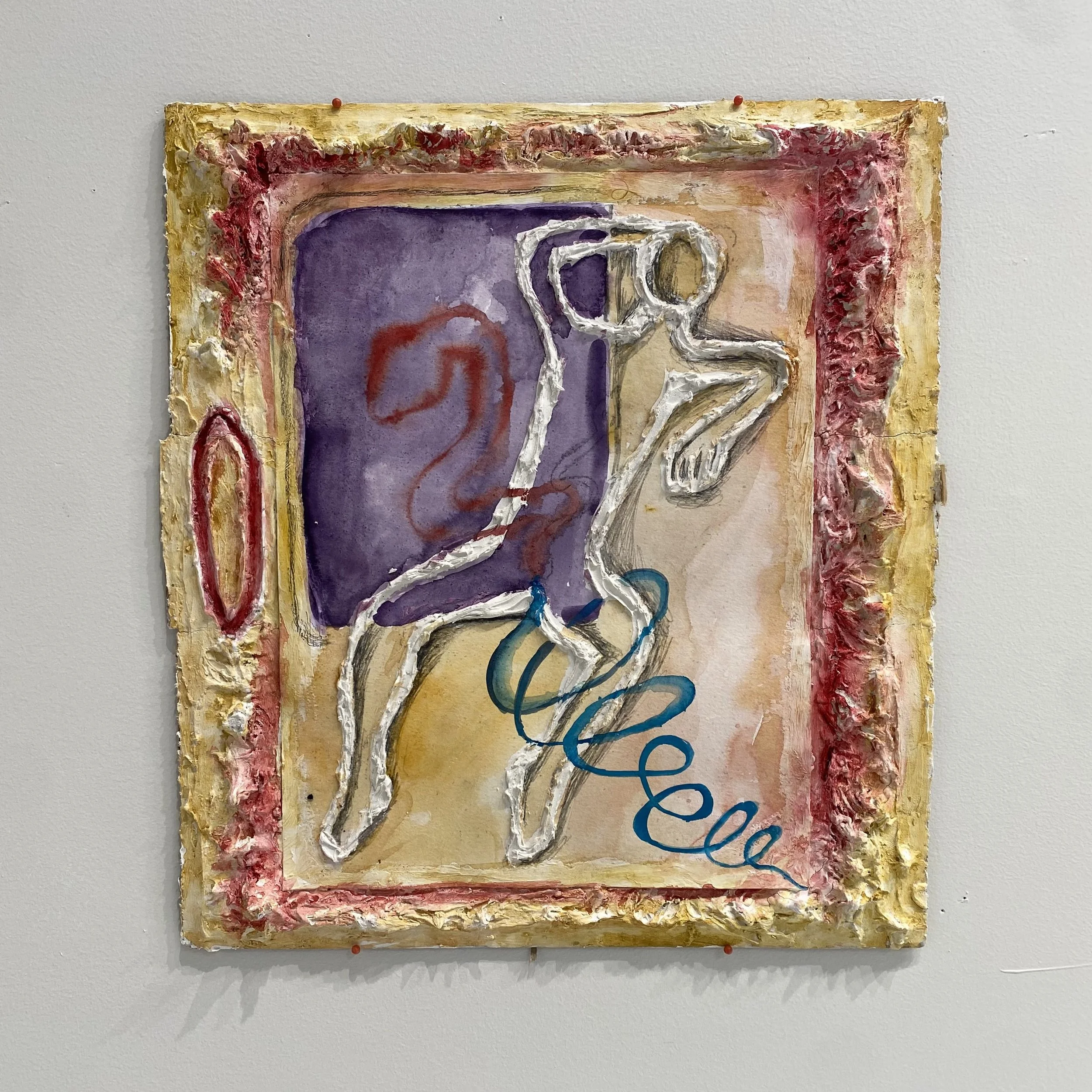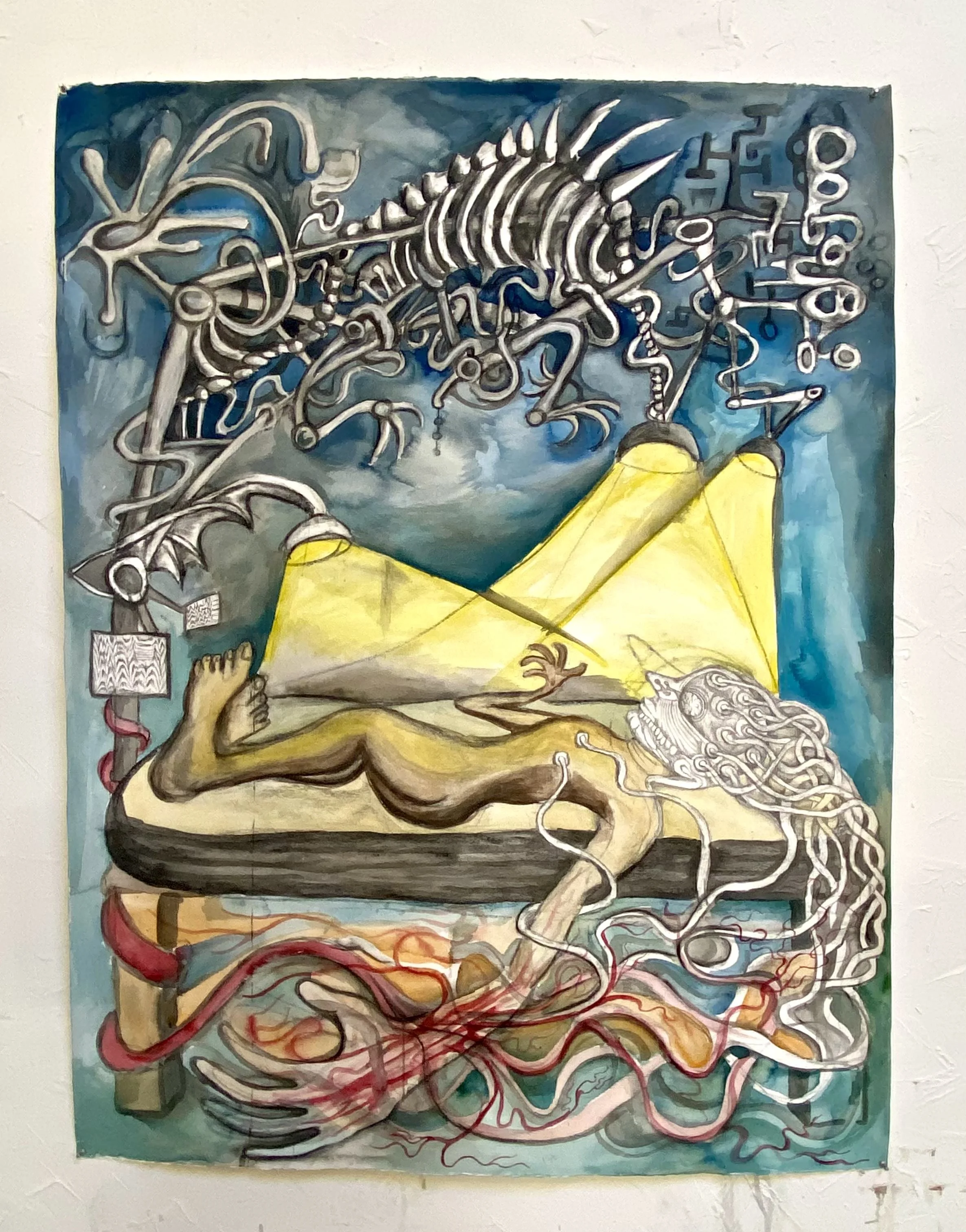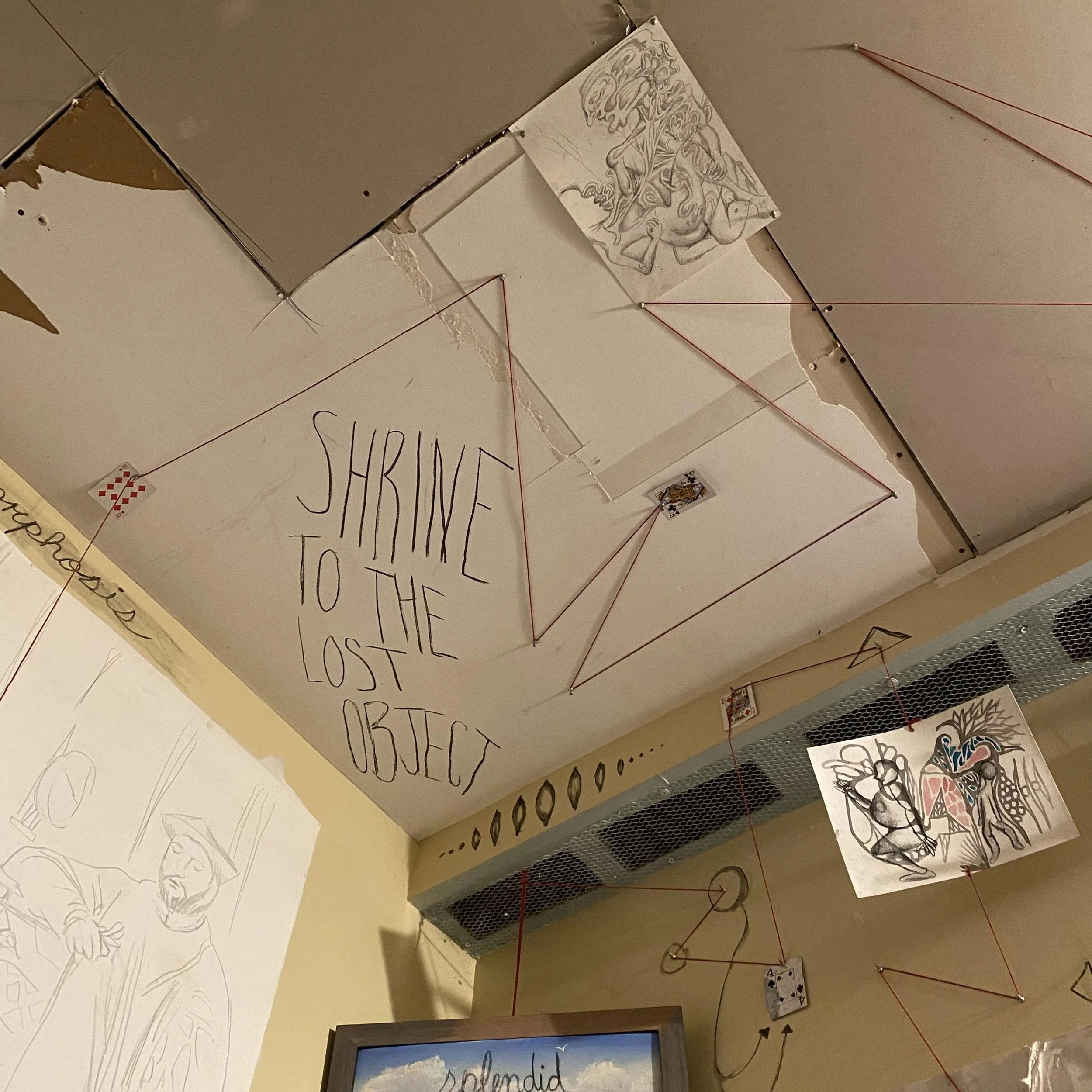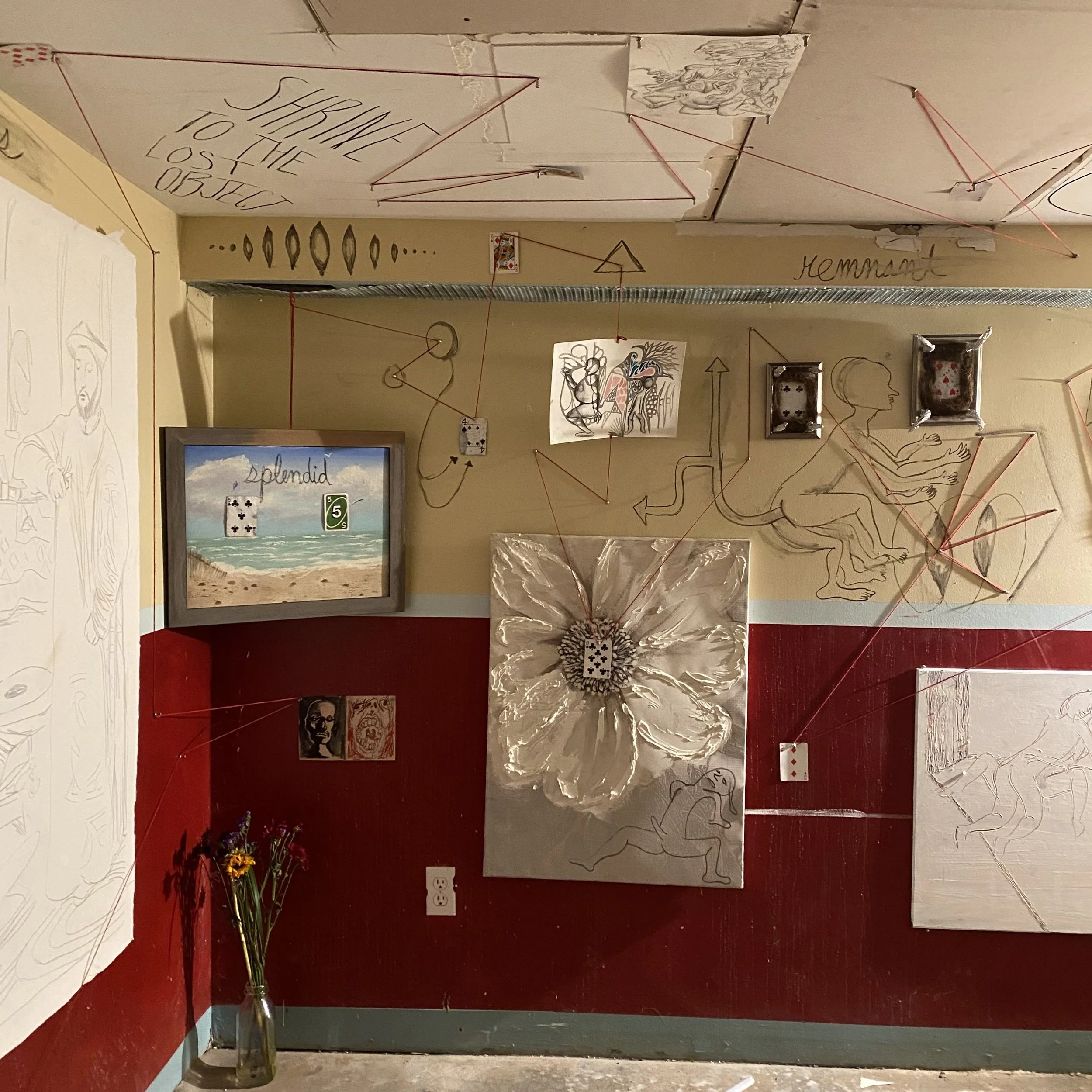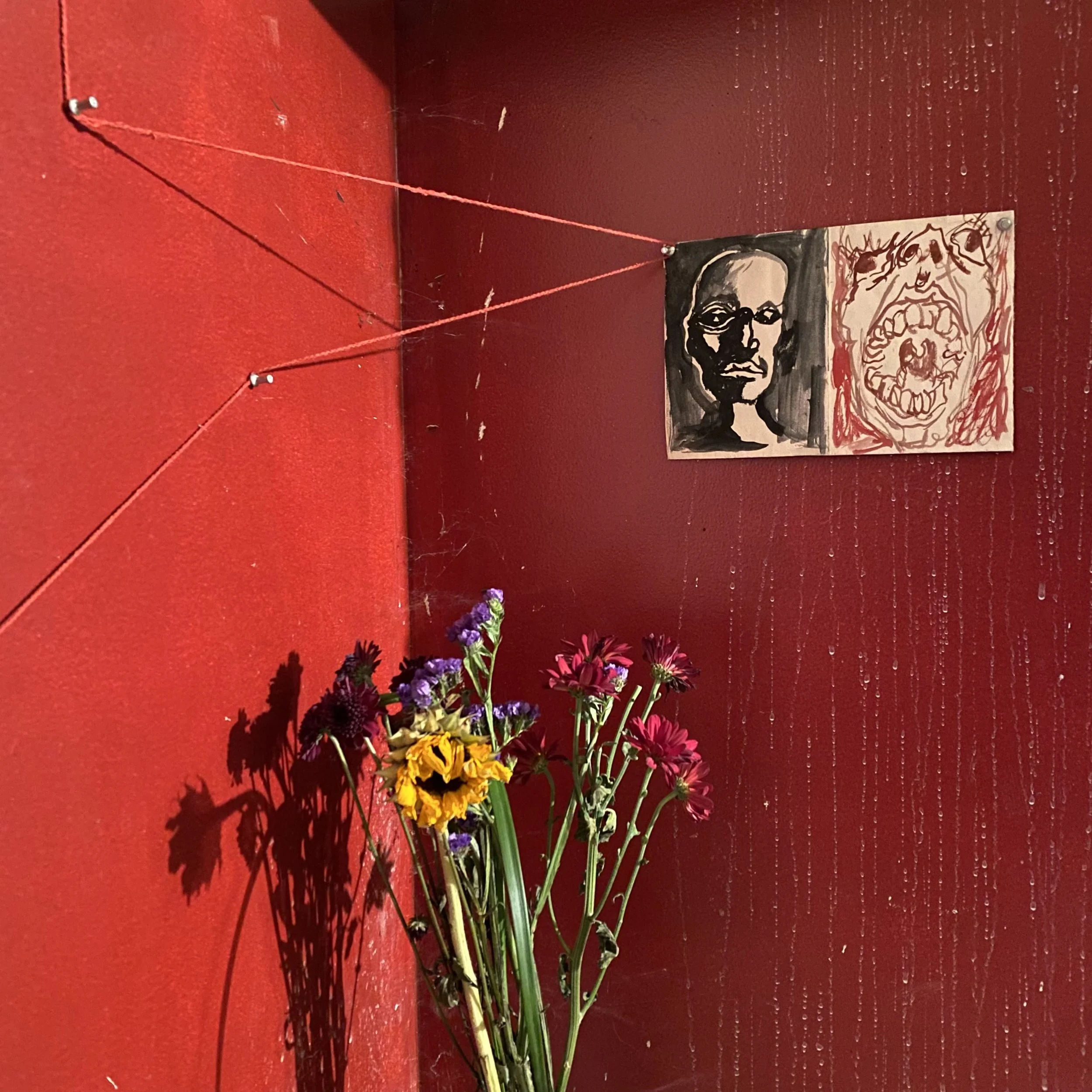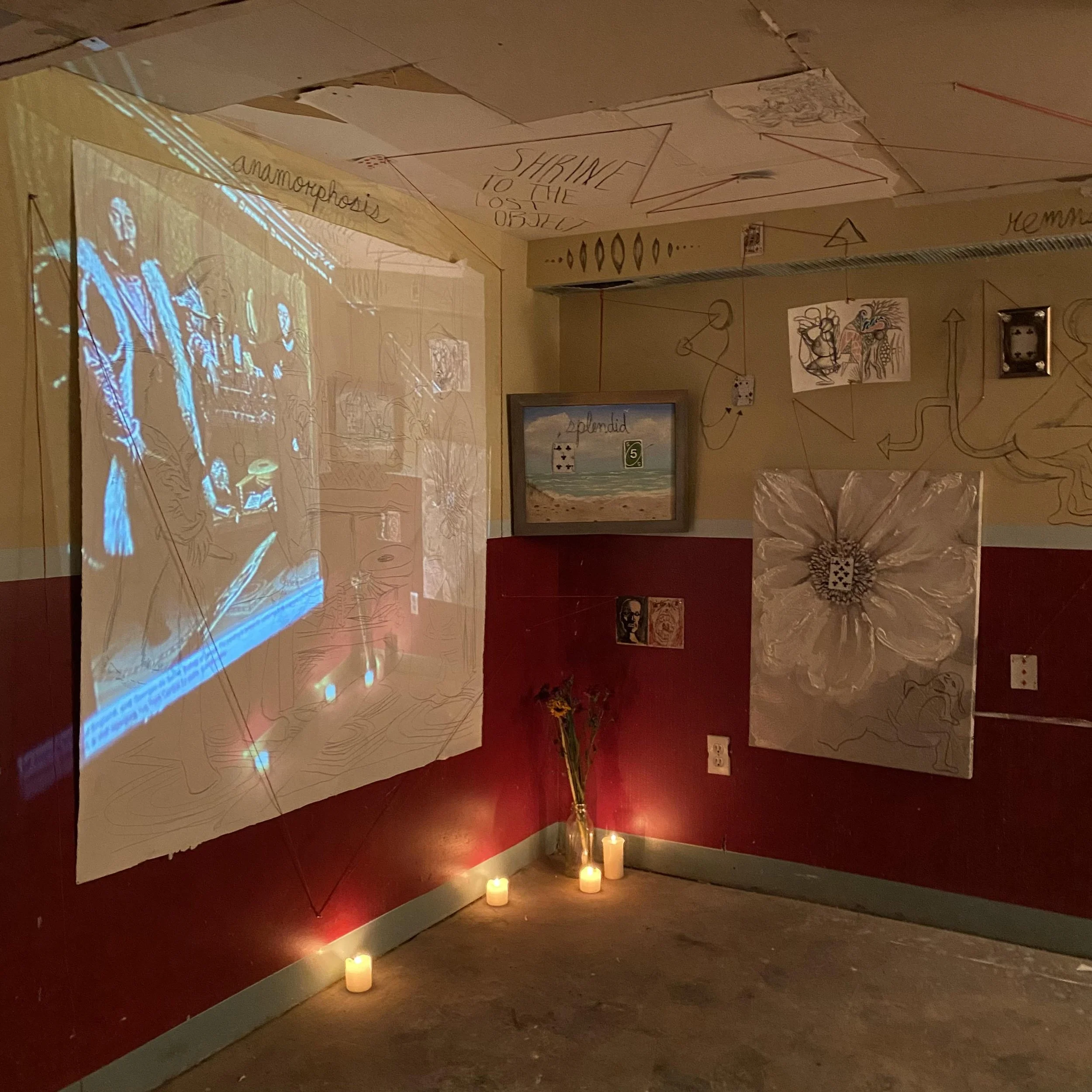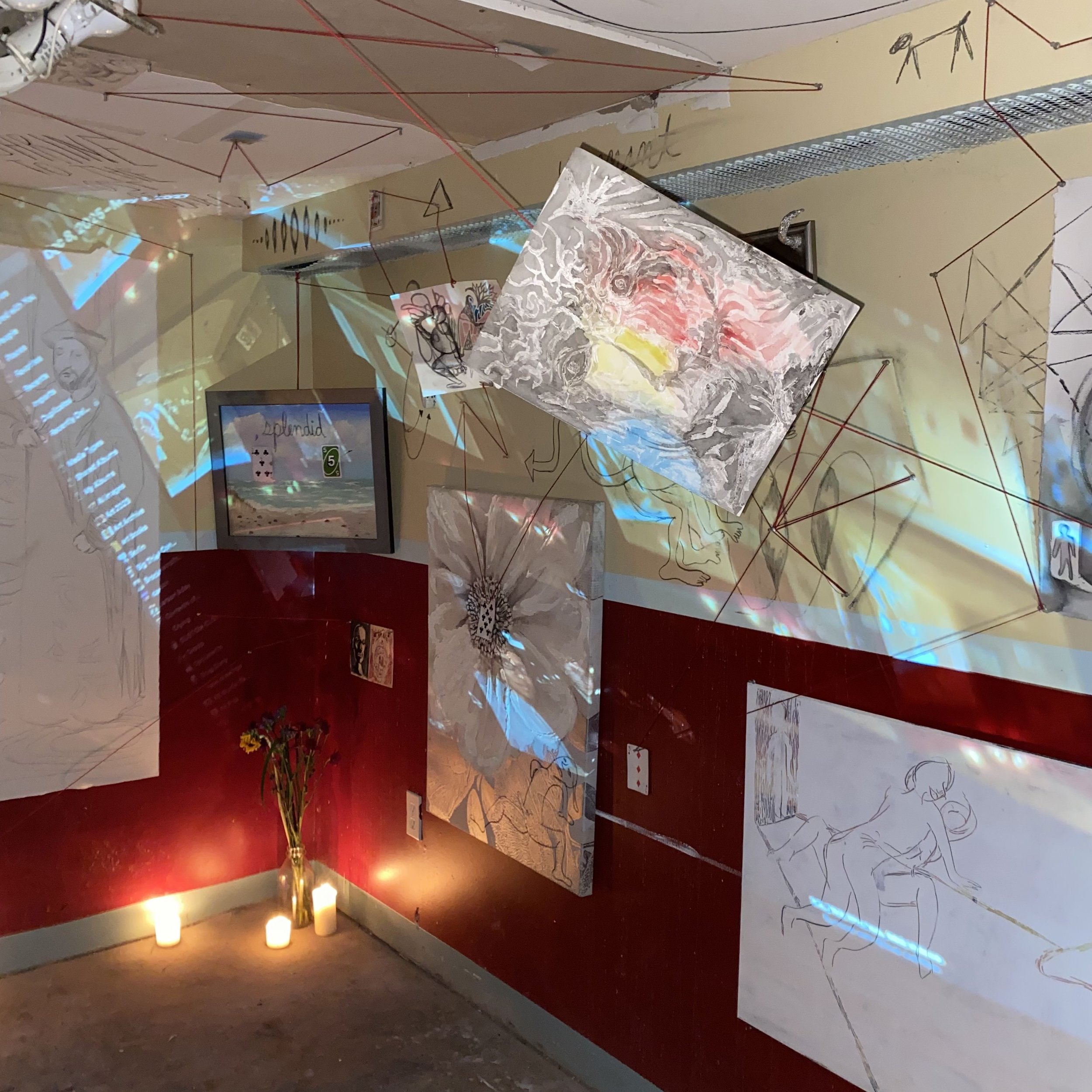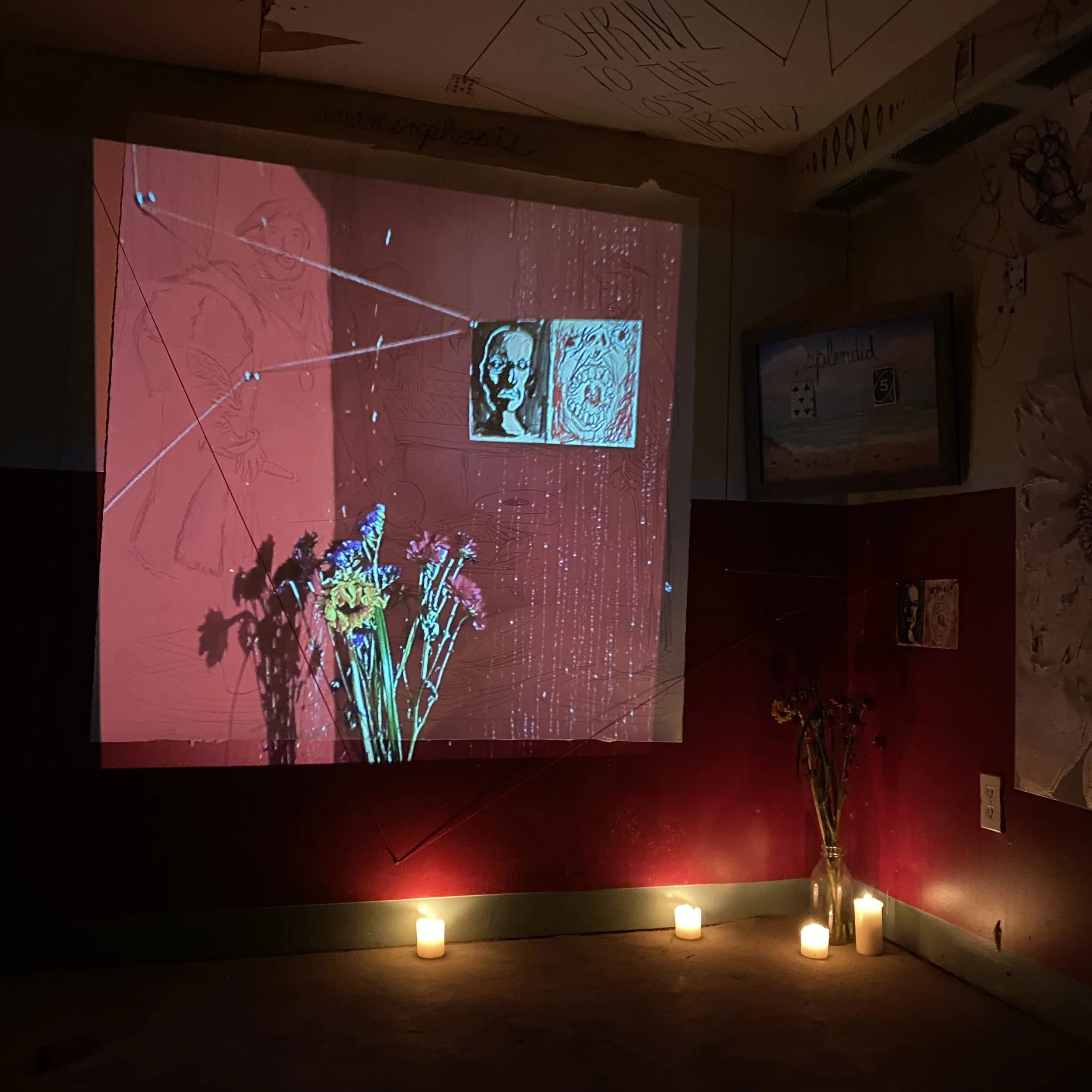Recent Work
Jouissance, 2025, graphite on paper, 50 x 53"
Jouissance (detail)
Jouissance (detail)
Jouissance (detail)
Jouissance (detail)
Jouissance (detail)
Enfold (Tension Drawing I), 2025, charcoal and ink on paper, resin coating, string
Enfold (Tension Drawing I), 2025, charcoal and ink on paper, resin coating, string
Phallus, 2025, spackle and gouache on paper and cardboard
Phallus, 2025, spackle and gouache on paper and cardboard
Electroencephalography, 2025, charcoal, gouache, ink and graphite on paper, 40 x 53"
Electroencephalography (detail)
Electroencephalography (detail)
Electroencephalography (detail)
